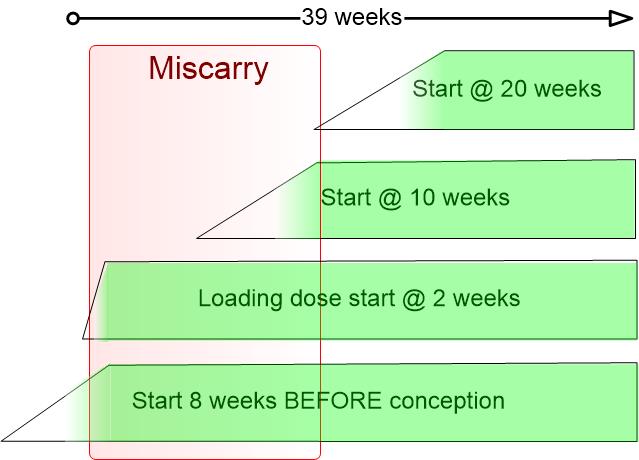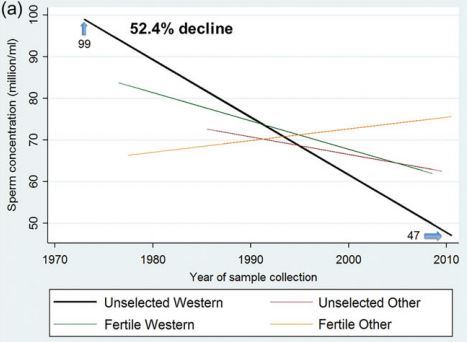Male fertility 4 X higher if high Vitamin D
Males with low serum levels of vitamin D have lower pregnancy rates when ovulation induction and timed intercourse are used as a treatment for infertile couples: results from a pilot study
Reproductive Biology and Endocrinology (2015) 13:127 DOI 10.1186/s12958-015-0126-9
Massimo Tartagni1, Maria Matteo2, Domenico Baldini3, Mario V. Tartagni3, Hala Alrasheed3, Maria A. De Salvia1, Giuseppe Loverro1 and Monica Montagnani1*
 click on chart for details
click on chart for details
📄 Download the PDF from VitaminDWiki
Background: Vitamin D (Vit D) is important for the regulation of reproductive physiology. In humans, maternal Vit D deficiency has been implicated in several reproductive- and pregnancy-related disorders. Very few data are available regarding the Vit D status in male partners of couples attempting pregnancy. This observational study (IRB Prot. N. 078/13) aimed to evaluate whether low Vit D serum levels in males might decrease the rate of successful conception in couples attempting pregnancy.
Methods: Male and female partners of infertile couples (n = 102) were classified into 2 GROUPS according to normal (>30 ng/ml) or low (below 30 ng/ml) serum Vit D levels in male partners. Semen analysis was performed in each male participant based on the WHO reference criteria. The female partners of both groups were subjected to 3 consecutive cycles of gonadotropin-induced mono-ovulation. The main outcome measures included the clinical pregnancy rate, delivery per patient and per cycle, and miscarriage rate between the 2 groups evaluated at the end of the three-month period of the study.
Results: In male partners of both groups, standard semen analysis did not highlight substantial differences in sperm concentration, sperm progressive motility, or typical form. The pregnancy rates per patient and per cycle and delivery rates per patient and per cycle were all significantly higher (p< 0.05) in couples with normal Vit D levels.
Conclusions: These results suggest the existence of a relationship between male Vit D serum levels and semen ability to begin a pregnancy during cycles of timed vaginal intercourse.
185 studies found 50% decrease in Sperm Count and Concentration in 38 years

Study in China however found infertility associated only with the active form of vitamin D - March 2016
Investigation of serum vitamin D levels in Chinese infertile men.
Andrologia. 2016 Mar 18. doi: 10.1111/and.12570. [Epub ahead of print]
Zhu CL1, Xu QF2, Li SX1, Wei YC1, Zhu GC1, Yang C1, Shi YC3,4.
1Department of Nuclear Medicine, Suzhou Municipal Hospital, Suzhou Hospital Affiliated to Nanjing Medical University, Suzhou, Jiangsu, China.
2Department of Clinical Laboratory, Suzhou Municipal Hospital, Suzhou Hospital Affiliated to Nanjing Medical University, Suzhou, Jiangsu, China.
3Center for Reproduction and Genetics, Suzhou Municipal Hospital, Suzhou Hospital Affiliated to Nanjing Medical University, Suzhou, Jiangsu, China.
4State Key Laboratory of Reproductive Medicine, Nanjing Medical University, Nanjing, Jiangsu, China.
Recently, the question of whether vitamin D exerts an effect on the pathogenic process of infertility has become the centre of attention. There are some controversial conclusions on this issue. Based on previous studies, we sought to explore the difference of serum 25-hydroxyvitamin D3 , 1,25-dihydroxyvitamin D3 levels between infertile patients and fertile men, and to find the influence on semen quality.
The analysis of serum 25-hydroxyvitamin D3 level showed no significant difference between infertile patients and fertile men.
However, the levels of serum 1,25-dihydroxyvitamin D3 in
oligospermia (P < 0.05),
asthenospermia (P < 0.01),
oligoasthenospermia (P < 0.05) and
azoospermia (P < 0.01)
patients were significantly lower than those in fertile men.
Moreover, serum 1,25-dihydroxyvitamin D3 level was positively correlated with progressive motility and total sperm number in infertile patients.
In addition, a positive correlation between serum prolactin and 1,25-dihydroxyvitamin D3 was observed in fertile men.
Our results indicated that lower vitamin D could be a risk factor for poor semen quality in infertile men.
The 1,25-dihydroxyvitamin D3 , as the biologically active form of vitamin D, may be more significant.
